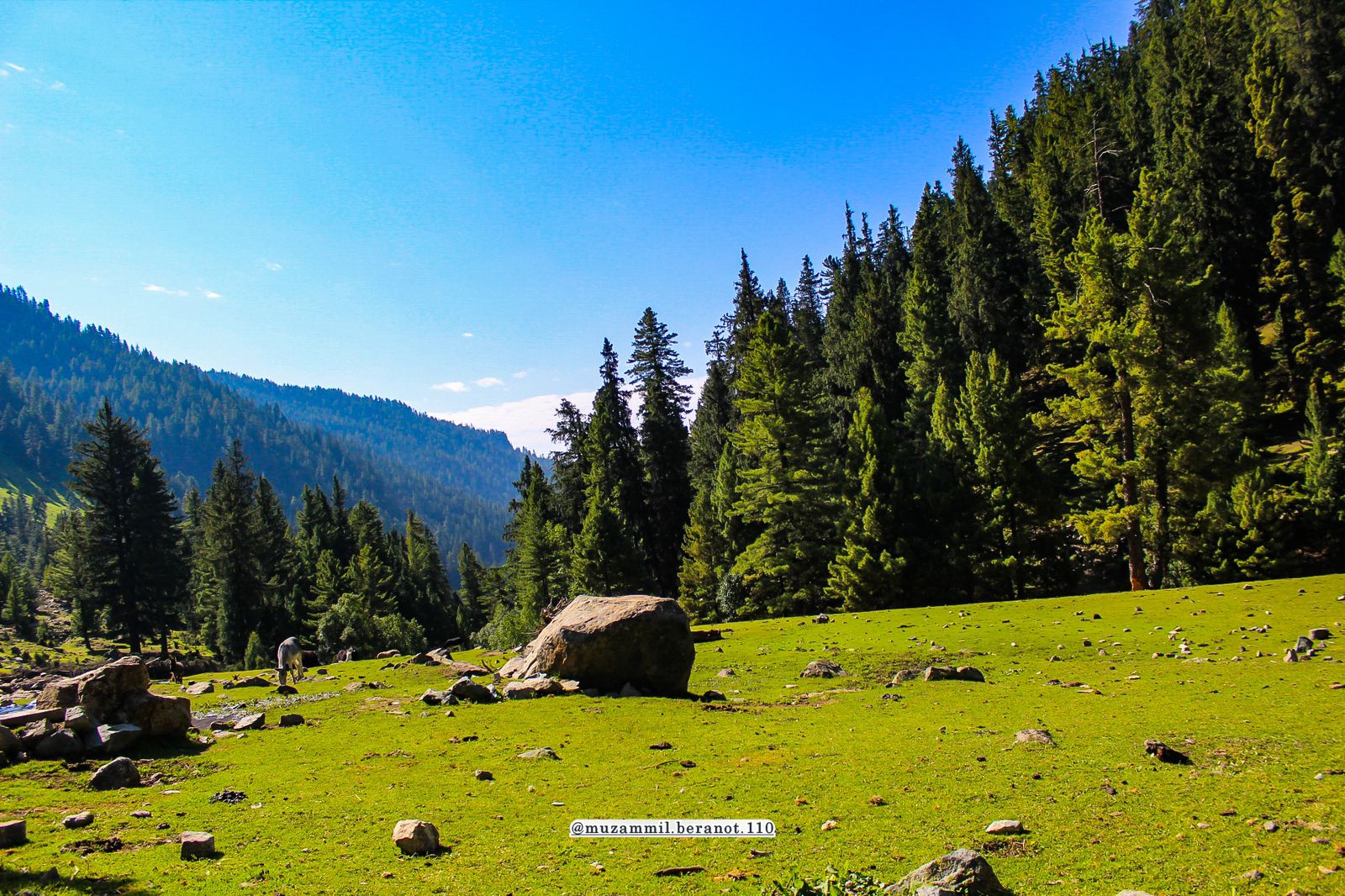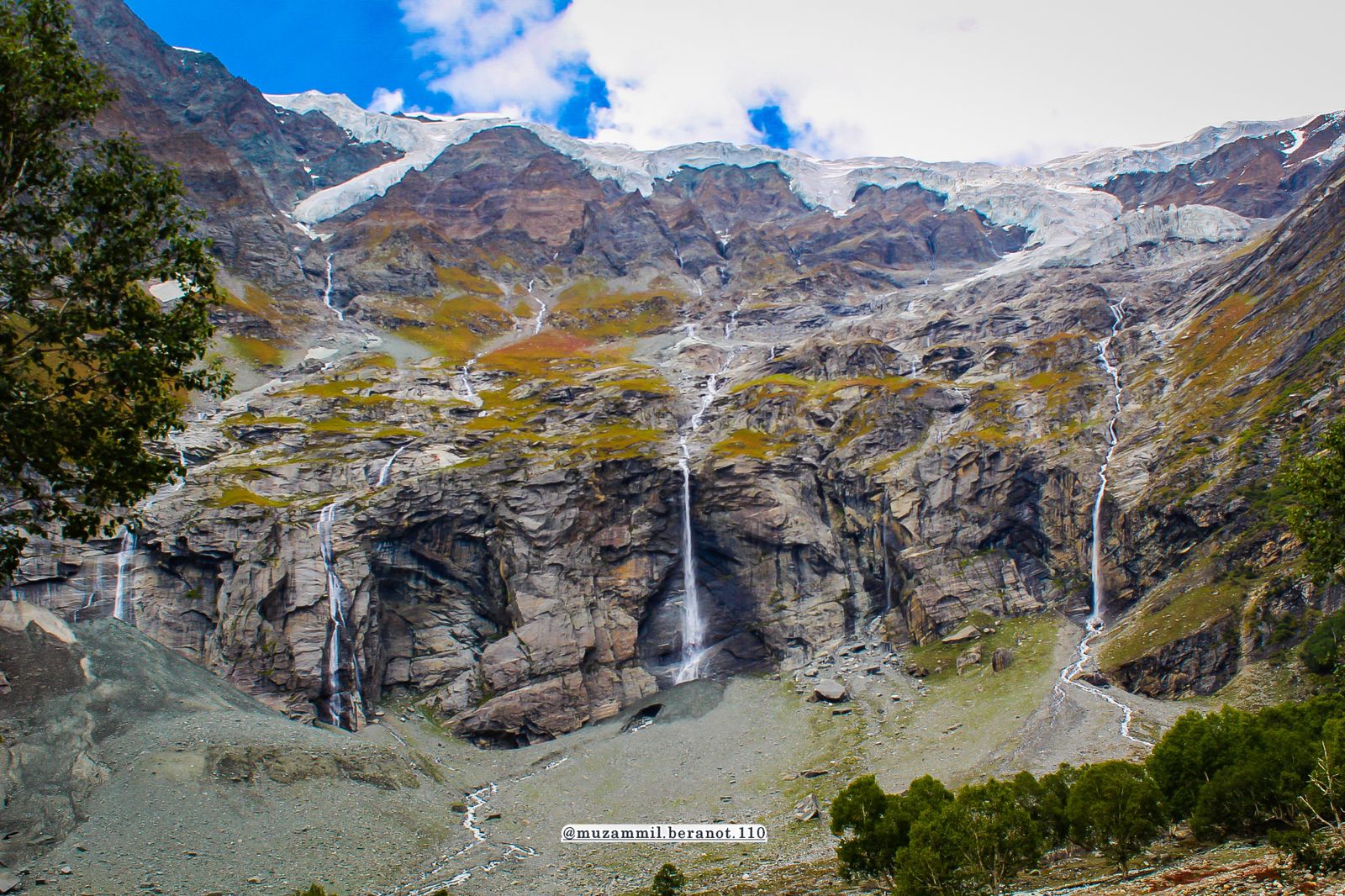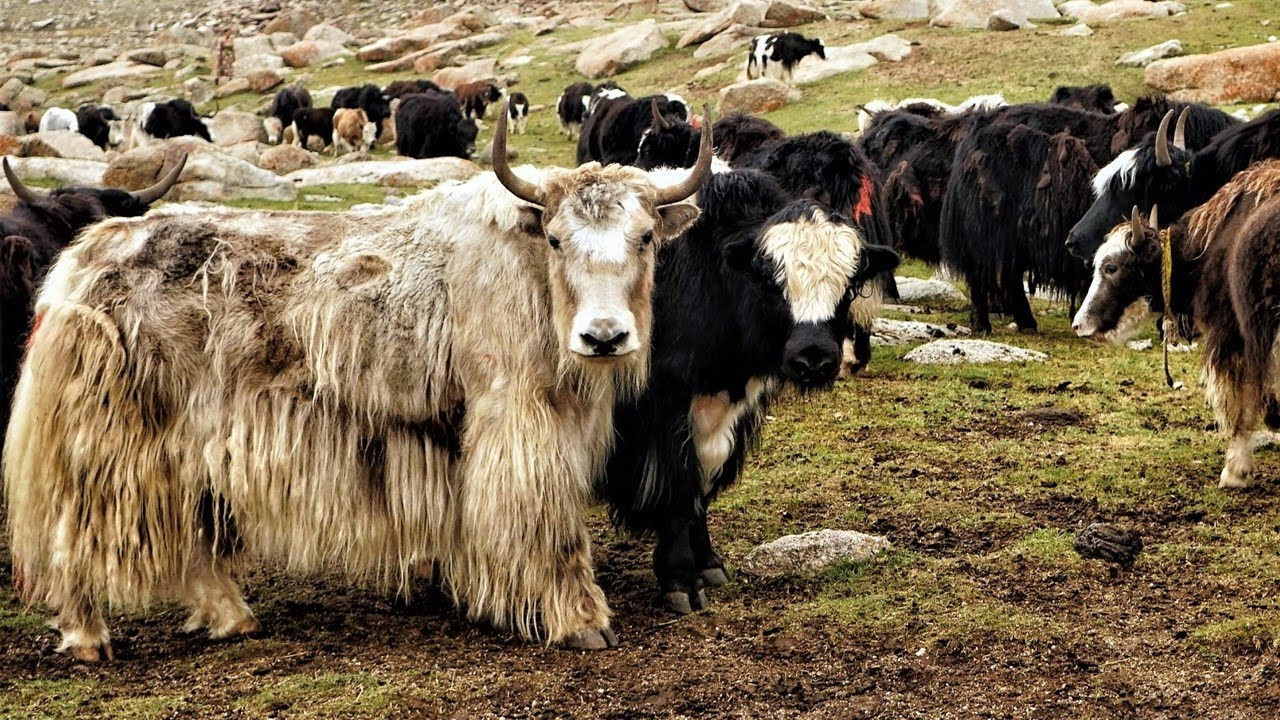Some journeys are planned, some are accidental and a few are rare and extraordinary happen because destiny wants to show you something unforgettable.
Our trip to Khaltaro Valley (Haramosh) about 3448m began completely unplanned. We were in Skardu, thinking our next stop would be something ordinary. But then Ali’s motorcycle broke down in Basho… which eventually led us to one of the most thrilling, dangerous, and breathtaking roads of Pakistan.
This blog is the complete story of that adventure from Gilgit to Sassi, from dust to cliffs, from forests to waterfalls, and finally to the green meadows of Haramosh.
The Thrill Road to Khaltaro — Where Mountains Carve the Way
Our morning started in Skardu with greetings:
Assalam Alaikum, Good Morning, Namaste.
The bikes were repaired, the gear packed, and the sun was already a bit too hot.
Our plan was simple:
- Gilgit → Sassi (1.5 to 2 hours)
- Sassi → Khaltaro (dangerous off-road jeep track)
Everyone had praised the road earlier, but all my previous experiences had been different. I remembered it as a broken, dusty, tiring patch.
But not today.
The New Road: A Fresh Masterpiece
As soon as we started riding, we realized why people had been praising it recently.
-
The mountains were sliced open to make way for the asphalt.
-
The slanting rock formations beside the road looked unreal.
-
And the cliffside drops—steep, silent, and scary—made sure we never got bored.
Even with heat burning our helmets, the views kept our spirits alive. The road twisted through dry mountains, past hanging rocks, and along valleys that remained unexplored for years.
Landslide Zone — Speed, Not Stopping
Just before reaching Shahtoot village, we entered a dangerous landslide area.
Loose rocks, dust hanging in the air, a giant rock stuck mid-mountain.
This is the kind of section where you don’t stop. You don’t look back. You just cross.
We crossed with a prayer in our hearts and dust in our lungs but the thrill was unmatched.
Dancing With Danger — The Thrilling Jeep Ride to Khaltaro Valley

At Sassi, we finally reached the point where the real Khaltaro track starts.
A dusty turn.
A broken board.
A small under-construction hotel.
And a jeep track climbing like a zig-zag made by giants.
Here, the true adventure began.
Off-Road Reality: Everything Looks Easy From a Distance
Ashfaq looked at the steep track and casually said:
“Yaar, from far away it looked easy.”
But as we climbed, we realized the truth:
Nothing is easy in Haramosh.
Except sitting at home and commenting on YouTube.
The track didn’t forgive mistakes. One slip, one skid, one wrong turn and it was a straight drop into the valley.
Yet the views were magical:
-
The Jaglot Skardu road looked tiny beneath us
-
Shahtoot village glowed green like an oasis
-
Dry peaks surrounded us but a snow covered peak in the distance gave us hope
We pushed ahead.
Into the Forest of Quiet Wonders — Hiking From Khaltaro Zero Point to Khaye Valley

Higher up, we saw a small mountain village, a child smiled at us, people waved, a man told us the truth:
The track is blocked further ahead landslide.
He showed us the crane working far across the valley, but we still stopped for water, for breath, and for a moment to absorb where we were, this is the magic of Haramosh no matter how hard the track is, the people soften the experience.
The Beginning of the Trail — A Path Carved by Nature
My hiking journey began at Khaltaro Zero Point, where the air was fresh, the trees stood tall like guardians, and the mountains rose around me like ancient giants. The trail ahead looked simple at first but every step revealed something new, something magical.
This 1.5 to 2-hour hike is not just a walk. It is a conversation between man and nature.
As I moved forward, the mountains appeared to be collapsing into each other, creating massive walls on both sides walls shaped by time, wind, and storms. The silence of the valley was broken only by the sound of a lively mountain river, dancing its way down with pure joy. Its water splashed on rocks like silver ribbons under the sunlight
Drinking Life — The Freshest Spring Water on Earth
Halfway through the trail, I found a small spring. Ice cold. Crystal clear. Pure water flowing from the heart of the mountain. I cupped my hands and drank. It was like drinking life itself fresh, cold, untouched. A taste you cannot find in any bottle. The locals say this water has zero germs, because it travels through layers of untouched soil and stone. That day, I believed it.
Arrival in Khaye Valley — Where Hospitality Lives in a Hut
After almost two hours of walking, the forest slowly opened into a place that felt unreal Khaye Valley.
A small wooden hut stood quietly beneath a spread of tall trees. An old man, white beard shining in the evening light, watched us arrive. His eyes were soft, full of peace and kindness the kind of hospitality only mountain people have.
He welcomed us with a smile, as if he had been waiting for us without knowing it.
Inside his hut, he served:
-
Fresh cold water
-
Hot mountain tea
-
A simple but heartfelt dinner
The warmth of his kindness made that small hut feel like a home built by nature.
A Night Under the Universe — Stars Closer Than Dreams
As night fell, the valley transformed. The sky opened like a giant window. Stars shimmered like diamonds scattered by angels. The silence became deeper, almost sacred. Lying under the wooden roof of that humble hut, it felt as if the stars were just next to my head, whispering stories of ancient travelers. For a moment, I wondered…
Maybe the mountains knew I was coming. Maybe the stars had been waiting for me.
The wind outside carried secrets, the river hummed its lullaby, and the mountains stood tall as if protecting our sleep.
Where Time Sleeps — Journey from Khaye Valley to Phameri and the Seven Waterfalls

A New Dawn — Leaving Khaye Valley Behind
The next morning, the sunlight gently filtered through the tall pines around Khaye Valley.
The old man blessed us before we left, wishing us “Khair” on the journey ahead. My group tightened their backpacks, took one last sip of mountain tea, and we stepped deeper into the untouched wilderness. Ahead of us waited Phameri Valley, a place that feels like it exists outside time.
Phameri Valley — The Land Where Summers Live
As we climbed further, the trail grew steeper and wilder. But soon, the forest opened into a hidden world Phameri Valley, a seasonal home where locals live only 4 months a year:
June, July, August, September.
For the rest of the year, the valley sleeps under thick layers of snow. Small stone huts stood quietly in the open meadows. Smoke rose from one of them, and the smell of woodfire wrapped around us with comfort.
Hospitality Lives Here
A group of locals approached us with warm smiles.
One of them said:
“Chai piyain? Mountain tea… fresh banai hai.”
(Would you like tea? It’s freshly made.)
The tea tasted like the valley itself warm, pure, and full of mountain flavor. They showed us the safest route forward, warning us about slippery corners and loose rocks. Their kindness added courage to our steps.
Weather That Changes Like a Story

As we continued walking, the weather suddenly shifted. A cold breeze swept through the valley, sharp and clean, for a moment, it felt like December had arrived early. Mist slid down the mountains, clouds hugged the peaks, and the entire valley transformed into a dream-like, romantic world. We wrapped our jackets tighter and kept moving.
Lunch Under a Grey Sky
We stopped beside a huge boulder for lunch. The wind was cold, the sky was silver, and the mountains felt unbelievably close. Eating in that silence made us realize.
Food tastes different when shared with the mountains.
An Unexpected Encounter — The Young Shepherd and the Donkey
Just as we resumed our trek, a small figure appeared from behind the rocks.
A young boy, maybe twelve, walking confidently through the rough trail.
Beside him was a donkey, and riding on it, his younger sister smiling shyly.
They came close, greeted us:
“Assalam Alaikum!”
We returned the Salam, and for a few minutes, we talked like old friends.
He told us:
-
They were going to collect firewood
-
Their family stayed in Phameri for the summer
-
The donkey was the only vehicle of the mountains
-
And the cold didn’t bother them they were born in it
Their innocence added a beautiful warmth to the cold valley. Then they waved and continued on their way, disappearing into the tall grass. It felt like a scene out of a mountain folk tale.
The Seven Singing Waterfalls — A Tale Written in Water

When the Mountains Opened Their Heart — The First Sight
When my group and I finally reached the place where the Seven Waterfalls of Khaltaro Valley revealed themselves, it felt as if the mountains had opened their heart for us. The air shifted. The sound of falling water wrapped around the valley like music. And for a moment, I stood still, unable to speak. It felt like Allah Almighty was gifting us pearls from the sky strings of silver water falling from the heights, shining under the sunlight like diamonds woven into the mountains.
Waterfall 1 to 7 — A Journey Through Living Water
As we walked closer, the waterfalls appeared one by one:
-
The first waterfall greeted us with the soft, inviting sound of fresh water.
-
The second flowed louder, as if calling us forward.
-
The third sparkled like melted crystal.
-
By the fourth, we could feel cool mist touching our faces.
-
The fifth roared with the power of a river.
-
The sixth looked like a silver curtain falling from the clouds.
-
And the seventh the final one stood like a king among them, powerful, ancient, beautiful.
It felt as though each waterfall whispered:
“Come closer… taste us… enjoy us… we were waiting for you.”
The entire valley vibrated with their voices, echoing through the mountains.
Where Waters Unite — The Meeting of Two Lovers
There is a special place where all seven waterfalls flow down and meet into a single stream.
And standing there, I felt something magical.
The merging waters did not just meet they embraced. It looked like the story of two lovers separated by time, finally reuniting after years of longing. The water twisted, circled, and joined as if it had a soul… as if it remembered every drop that had ever fallen.
The river that formed there felt alive, strong, pure, hopeful. I closed my eyes and listened. The sound was not noise it was a story written in water, a story the mountains had carried for centuries.
A Moment That Lives Forever
We stayed there for a long time, capturing photos, drinking from the cold streams, and letting the mist settle on our faces. The waterfalls felt like a blessing, a natural miracle hidden deep in the wilderness of Haramosh.
And as I walked away, I kept thinking:
Maybe the waterfalls are not just waterfalls. Maybe they are voices, stories, prayers.
And memories flowing from the heart of the mountains.
Khaltaro Valley showed us beauty that words may never fully describe but the feeling will stay forever.
The Silent Guardians of Khaltaro Valley — A Yak’s Tale

High up in the Khaltaro Valley, where the mountains pierce the sky and glaciers glimmer like glass, a special herd lived quietly the silent, majestic yaks.
These creatures were not ordinary yaks. They were the guardians of the valley, born under the frozen shadows of Haramosh’s peaks. For most of the year, they roamed beneath the ice, hidden from sight, surviving the harshest winters in the cold embrace of snow and rock.
But when the snows receded and spring whispered its warmth across the valley, they returned to Khaye Valley, where life was gentler and the world breathed again. The locals, who had lived in harmony with the mountains for generations, welcomed them with open hearts.
For three months, the villagers fed the yaks with food they had carefully stored—hay, grains, and herbs from the lower valleys.
Yet the life of a yak in Khaltaro was never without risk. In winter, when the valley was blanketed in snow, villagers would sometimes sacrifice one yak, known locally as Ziba, to ensure enough food for the remaining herd an ancient ritual of survival and respect for nature.
I remember standing in the cold morning air, watching these magnificent creatures move silently across the valley floor. Their breath rose like smoke, and their eyes reflected the snow-capped mountains. There was a calm dignity in their steps, as if they carried the entire valley’s history in their hooves.
In that moment, I realized: the yaks were more than animals they were the heartbeat of Khaltaro Valley, a living bridge between humans and the wild, a reminder of survival, harmony, and quiet strength in the mountains of Haramosh.
Across the Emerald Horizon — Trekking From Seven Waterfalls to Khun Meadows
Leaving the Seven Waterfalls — A New Path Awaits
On the final morning of our journey, we packed our bags, breathed in the cold mountain air, and stepped onto a new trail leading to Khun Meadows.
This route was different quieter, greener, and deeper into the wild heart of Haramosh. The hike began from the opposite side of Khaye Valley, a 2–3 hour trail filled with soft winds and the freshness of early sunlight. My legs were tired this was our third day of hiking but my heart was full of excitement. Ahead of us lay the legendary Khun Meadows, known by locals as the land of endless green.
Through Humal Valley — A Trail of Stories
After about an hour of descending from the waterfalls, we reached Humal Valley, a peaceful patch of earth wrapped between mountains. From here, the ascent began again a steep, breath-testing hike upward toward Khun.
The climb wasn’t easy. The trail narrowed, the stones shifted, and every step demanded effort. But nature kept us company. Along the path, I noticed clusters of mushrooms standing like tiny umbrellas on the edges of the track. Some local men wandered through the forest, picking certain mushrooms with great care.
That’s when I learned a story.
The Tale of the Morel Mushrooms — Mountain Gold
The locals call them “kuchuhi” morels, one of the rarest and most expensive mushrooms in the world.
They grow only in a specific season, hidden deep in the forests of Haramosh.
Villagers collect them, dry them under the sun, and store them like treasure. These mushrooms are used for:
-
Traditional medicines
-
Healing broths
-
Winter food
-
Even luxury dishes across Pakistan
Finding them is like finding gold and that day, we walked through a forest filled with this magic.
Arrival at Khun Meadows — A Green World Without End

Finally, after the long uphill struggle, the forest opened and there it was.
Khun Meadows.
At 3448m height a never-ending carpet of green, stretching as far as my eyes could see.
Soft hills rolled like waves, golden sunlight touched the grass, and the wind danced through the open fields. It felt like stepping into another world—a quiet, untouched paradise suspended between mountains.
We sat down, opened our water bottles, and let nature wash away the tiredness of three long days.
The Boys of Khun — A Strange Daily Routine
While resting, two young boys approached us with a friendly “Assalamualaikum, kya haal hai?”
We greeted them back, and I asked where they had come from.
Their answer shocked me:
“We came here to call someone in Gilgit City.”
I couldn’t believe it.
“You tracked for two hours just to make a phone call?”
One of the boys laughed and said,
“Bhai, it’s our daily routine. SCOM network only works at the edge of Khun Meadows.”
And just like that, the mountain wilderness suddenly connected to the modern world.
Of course, we followed the boys to the exact point where the network arrived the only spot where SCOM signals touched the valley. After three days without internet, I finally updated my status a digital whisper after days of silence.
Closing the Chapter — The Journey Ends
After capturing final photos, soaking up the green scenery, and enjoying a cup of hot chai with lunch, we packed up our bags.
It was time, time to walk back, time to return to our bikes, time to close the chapter of one of the most unforgettable journeys of my life. Khaltaro Valley had given us waterfalls, forests, meadows, trails, stars, stories, and pure mountain peace. And as we walked away, I felt like the valley whispered behind us:
“Come back again…”








